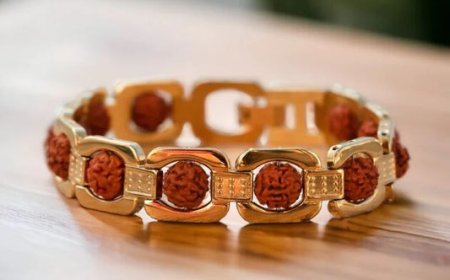Easy Tips to Get Your Cat to Chew Dental Treats
Discover easy tips to get your cat to chew dental treats for better oral health. Make dental care fun, tasty, and stress-free with expert-approved tricks!

Keeping your cats teeth clean is just as important as feeding them the right food or giving them a comfortable bed to nap in. Yet, many pet parents overlook dental hygiene. The truth is, dental disease in cats is incredibly commonby age three, most cats show signs of gum disease. One of the easiest ways to support your felines dental health at home is by using cat dental treats. However, getting a picky or uninterested cat to actually chew on them can be a challenge. Dont worryweve got you covered with practical, easy-to-follow tips that will make your cat look forward to their dental snacks.
This guide will help you understand how to get your cat to chew dental treats, what signs to look for in a good treat, and why it matters for their health. Lets make dental care fun and easy!
Why Cat Dental Care Matters
Before jumping into tips, its important to understand the why behind dental care for cats. Dental issues in cats dont just lead to bad breath. Left untreated, they can cause:
-
Gum inflammation (gingivitis)
-
Tooth loss
-
Oral pain
-
Bacterial infections that can spread to vital organs
Veterinary cleanings are essential but can be costly and require anesthesia. Thats where at-home solutionslike Kwik Pets cat dental treatscome in. These treats are formulated to help remove plaque, massage the gums, and freshen breath with each bite.
1. Choose the Right Texture and Flavor
Cats can be extremely picky. Some prefer crunchy textures, while others love soft chews. Try offering different types of dental treats and observe your cats reaction. Dental treats come in multiple flavors like chicken, salmon, or turkey. Start with a flavor your cat already enjoys in other foods or treats.
Pro Tip: Some of the best cat dental treats also contain enzymes or chlorophyll to support oral health. Always check the label for dental-specific ingredients.
2. Start Slowly and Make It a Routine
Dont just toss a dental treat on the floor and hope for the best. Introduce it gradually. First, let your cat sniff the treat. Then, try placing it near their usual feeding area. Some cats might be hesitant initially, especially if its a new shape or texture.
Be patient and try offering one treat a day at the same timeconsistency helps build trust. Cats love routines. Eventually, they may begin anticipating their dental treat as a daily snack
3. Use Positive Reinforcement
Cats are more responsive to rewards than punishments. Pairing dental treats with affection, praise, or playtime can build a positive association. When your cat takes a bite, follow it with petting or a short play session with their favorite toy.
Some pet parents even use dental treats as training rewards. Yes, cats can be trained! When your cat performs a simple trick or behavior, offer a dental treat as a reward.
4. Make Treat Time Engaging
If your cat isnt responding to treats on their own, turn it into a game. Hide the dental treat in a puzzle feeder or a toy. Some treat balls can be filled with dry snacks that release as your cat bats them around.
This encourages physical activity and engages their natural hunting instincts. When your cat finally gets the treat out, theyll be more inclined to chew and savor it.
5. Break Treats Into Smaller Pieces
Larger treats can be intimidating, especially for smaller or older cats. If your feline refuses to chew the treat, try breaking it into smaller pieces. This also helps prevent them from swallowing the treat whole without chewingdefeating the purpose of a dental chew.
Look for treats that crumble into smaller bits when snapped or opt for soft dental chews designed for sensitive teeth.
6. Pair with Dry Dental Food
Some dry cat foods are specifically formulated to clean teeth as your cat chews. Pairing Kwik Pets cat dental treats with a dental dry food can boost your cats oral hygiene efforts.
Its important to note that not all dry kibble is good for dental health. Some break down too easily and dont provide the needed chewing resistance. Look for products with a vet-recommended seal or those that have been tested for tartar control.
7. Offer Treats After Play or Meals
Timing can make a big difference. Cats are often more interested in food after an active play session or a satisfying meal. Try offering a dental treat when your cat is already relaxed and contentthis is when theyre most likely to accept something new.
Dont forget that treats should be limited to 10% or less of your cats daily calorie intake. Use dental treats as a healthy post-meal reward or occasional snack.
8. Keep the Environment Calm
A stressed or anxious cat is unlikely to be interested in trying anything new, including treats. Choose a quiet, comfortable environment free of sudden noises or distractions when offering the dental chew.
Speak in a calm voice, sit at your cats level, and gently encourage them without forcing the treat into their mouth. Remember, youre building trust.
9. Store Treats Properly
Cats can easily detect stale or off-smelling food. Make sure youre storing treats in an airtight container in a cool, dry place. Avoid treats that have expired or changed in appearance. Fresh-smelling treats are more enticing and will get better results.
10. Be PatientEvery Cat is Unique
Finally, understand that every cat has their own preferences and pace. Some may take to dental treats immediately, while others need a week or more of slow introduction.
Keep experimenting with brands, flavors, and serving styles until you find what works. When you do, youll be helping your cat enjoy better dental healthone bite at a time.
Final Thoughts
Getting your cat to chew dental treats might take time and a bit of creativity, but its absolutely worth the effort. With a combination of patience, the right product, and some positive reinforcement, your cat will begin to enjoy their treatsand youll enjoy the peace of mind knowing their teeth and gums are getting the care they need.
If you're not sure where to begin, try trusted options like Kwik Pets cat dental treats for quality and flavor your feline cant resist. A clean mouth leads to a happy, healthy, and longer life for your furry friend.
FAQs
1. How do cat dental treats help with oral health?
Cat dental treats are designed with textures and ingredients that help reduce plaque and tartar buildup. As your cat chews, the abrasive texture scrapes against their teeth, promoting gum health and fresher breath.
2. What if my cat refuses to eat dental treats?
Start by offering a flavor your cat already enjoys. Introduce the treat in a relaxed environment, break it into smaller pieces, and use positive reinforcement like praise or playtime. You can also try hiding the treat in a puzzle toy to make it more engaging.
3. How often should I give my cat dental treats?
Most dental treats can be given once daily. Always follow the feeding instructions on the package. Treats should not exceed 10% of your cats daily calorie intake. Consistency is key for long-term oral benefits.
4. Are Kwik Pets cat dental treats safe for kittens?
Kwik Pets cat dental treats are formulated for adult cats, but some soft dental options may be suitable for kittens over a certain age. Always check the label or consult your vet before giving treats to younger cats.
5. What should I look for in the best cat dental treats?
The best cat dental treats are those that are vet-approved, have a crunchy or textured surface, contain natural ingredients, and are free from artificial additives. Look for treats that are part of your cats daily dental care plan.
Conclusion:
Dental treats are a low-effort, high-impact way to boost your cats oral hygiene. With these easy tips and the right products, like those available at Kwik Pets, you can build a fun, consistent dental routine that keeps your cat smiling for years to come.






























